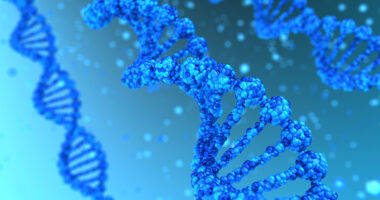Changes to Heart Can Be Evident in Myotonic Dystrophy Type 2, FSHD1

Heart problems can progress quickly in people with myotonic dystrophy type 2 (MD2) or facioscapulohumeral muscular dystrophy type 1 (FSHD1), even in those showing no symptoms of cardiac disease, a study reported.
“MD2 and FSHD1 patients should be carefully followed-up to identify early development of remodeling and potential risks for the development of further cardiac [heart-related] events even in the absence of symptoms,” its scientists wrote.
The study, “Progressive myocardial injury in myotonic dystrophy type II and facioscapulohumeral muscular dystrophy 1: a cardiovascular magnetic resonance follow-up study,” was published in the Journal of Cardiovascular Magnetic Resonance by a team of researchers in Germany.
In muscular dystrophies, it’s known that different muscle groups — the heart included — can be affected by weakness of varying severity. With some disease types, however, information on cardiac involvement is conflicting.
Researchers in Germany focused on MD2 and FSHD1, two types that “could be underdiagnosed due to frequently mild symptoms and slower progression in females.”
MD2, the rarer of two forms of myotonic dystrophy, is marked by gradually worsening muscle weakness, muscle wasting, and prolonged muscle tensing, often starting in the thigh. Its symptoms begin in adulthood and are usually milder than those of type 1.
FSHD1 also progresses slowly and most cases manifest during adulthood. Muscle weakness typically affects the face, shoulders, and upper arms.
“MD2 and FSHD1 are mainly recognized as muscular diseases with rare cardiac involvement,” the researchers wrote. In pilot studies, however, they found injury to the heart muscle in over a quarter of MD2 or FSHD1 patients examined.
“Even mild initial dysfunction may lead to severe heart failure over months to years,” they wrote. “However, systematic follow-up analysis in patients with MD2 and FSHD1 are lacking.”
Researchers now looked at how the heart changes — or remodels — in response to injury, and how this may connect to potential irregular or abnormal heartbeats (arrhythmias). To do so, they used cardiovascular magnetic resonance (CMR), which is a test that provides an image of the heart’s structure and blood vessels.
Their study (ISRCTN16491505) included 27 patients with MD2 who were followed for a mean of 3.9 years, and 41 patients with FSHD1 followed for a mean of two years. Among them, 22 MD2 patients (mean age of 58) and 40 FSHD1 patients (mean age of 49) underwent CMR.
Right ventricular ejection fraction, which is a measure of how much blood is being pumped out of the right side of the heart to the lungs to take in oxygen, was mildly impaired in both patient groups by the end of the follow-up period.
Focal fibrosis, which refers to scarring in a small region of the heart, was seen in six MD2 patients (27%) and 15 of those with FSHD1 (37%). All patients with focal fibrosis showed a significant increase in the size of both left and right bottom heart chambers.
Fat deposits in the heart muscle were seen in seven MD2 patients (32%) and 12 FSHD1 patients (30%).
“We demonstrate that cardiac remodeling is progressive in both MD2 and FSHD1,” the researchers wrote. “Even in the absence of significant cardiac symptoms we observed a progression of structural and functional changes regarding all cardiac chambers.”
Over the course of follow-up, there was an increase in the number of arrhythmias. All with arrhythmias arising from the bottom heart chambers had focal heart changes and larger bottom chambers. Patients with fast heart rhythms in the upper part of the heart (supraventricular tachycardias) had larger left upper chambers.
The findings suggest that heart changes, such as scarring and fat deposits, may be linked to irregular heartbeats.
“A potential association between an increase in arrhythmias and progression of myocardial tissue damage, such as focal fibrosis and fat infiltration, exists,” the researchers concluded.
“In our study we observed a remarkably fast progressive decline of the cardiac morphology and function as well as a progression of rhythm disturbances including arrhythmias, even in asymptomatic patients,” they added, a finding that “underlines the need for routine ECG or echocardiographic testing” including in patients without cardiac symptoms.
An important study limitation was the use blood pressure-lowering medications by some patients, which could affect the remodeling process. Ten people with MD2 (45%) and seven with FSHD1 (17%) were on angiotensin-converting enzyme inhibitors or angiotensin receptor blockers, and three patients in each group were taking beta-blockers. Another study limitation was its relatively small size, the researchers noted.







